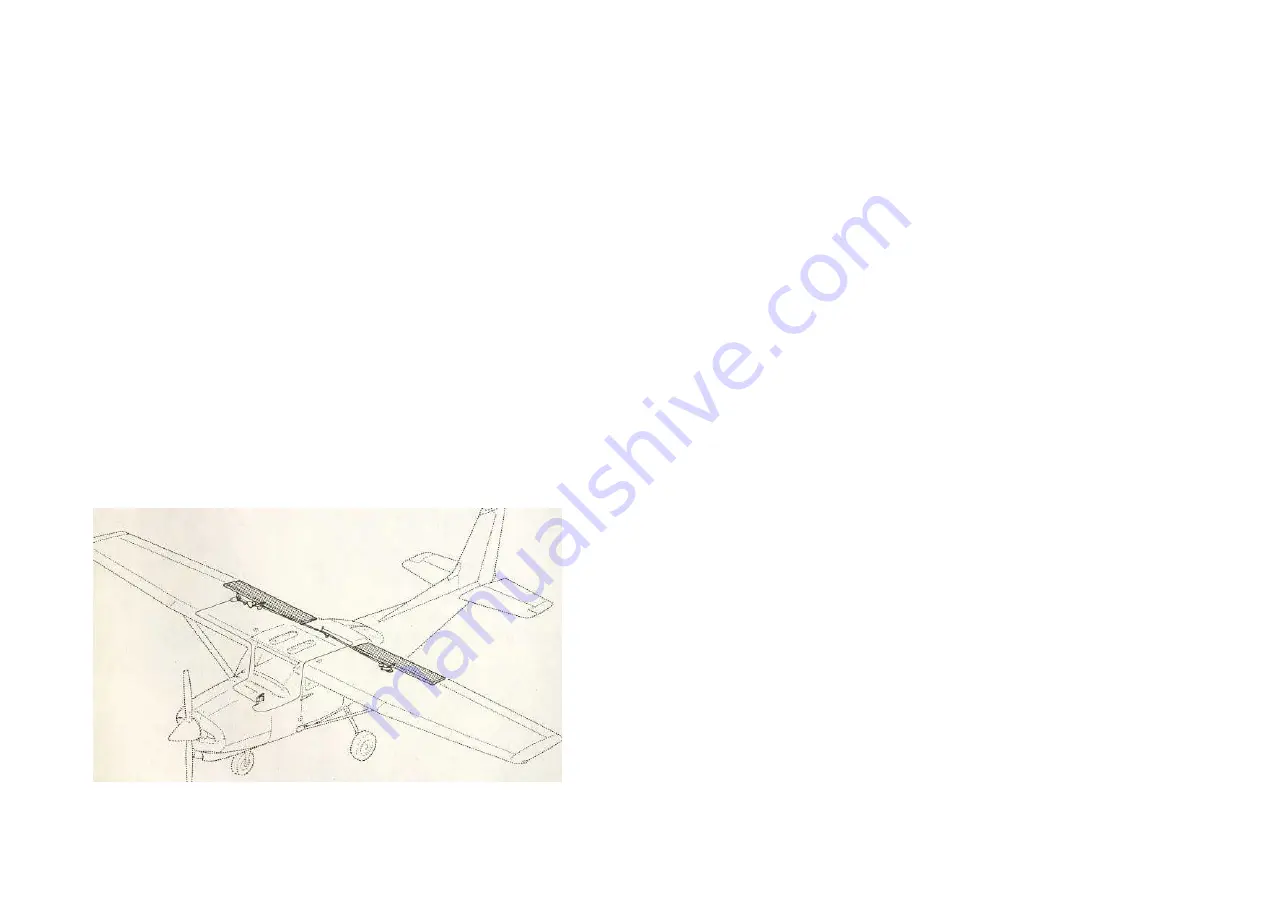
SECTION 7
CESSNA
AIRPLANE & SYSTEMS DESCRIPTIONS
MODEL 172RG
horizontal surfaces to move the airplane. If the airplane is to be towed by
vehicle, never turn the nose wheel more than 30° either side of center or
structural damage to the nose gear could result.
The minimum turning radius of the airplane, using differential
braking and nose wheel steering during taxi, is approximately 27 feet. To
obtain a minimum radius turn during ground handling, the airplane may
be rotated around either main landing gear by pressing down on a tailcone
bulkhead just forward of the horizontal stabilizer to raise the nose wheel
off the ground.
WING FLAP SYSTEM
The single-slot type wing flaps (see figure 7-3) are extended or
retracted by positioning the wing flap switch lever on the right side of the
switch and control panel to the desired flap deflection position. The switch
lever is moved up or down in a slotted panel that provides mechanical
stops at the 10° and 20° positions. For flap settings greater than 10°, move
the switch lever to the right to clear the stop and position it as desired. A
scale and pointer on the left side of the switch lever indicates flap travel in
degrees. The wing flap system circuit is protected by a 15-amp
push-to-reset circuit breaker, labeled FLAP, on the left side of the switch and
control panel.
Figure 7-3. Wing Flap System
7-10
1 July 1979
CESSNA
SECTION 7
MODEL 172RG
AIRPLANE & SYSTEMS DESCRIPTIONS
A gear warning interconnect switch is incorporated in the flap system,
and sounds a warning horn when the flaps are extended beyond 20° with the
landing gear retracted.
LANDING GEAR SYSTEM
The landing gear is a retractable, tricycle type with a steerable nose
wheel and two main wheels. Shock absorption is provided by the tubular
spring-steel main landing gear struts and the air/ oil nose gear shock strut.
Each main gear wheel is equipped with a hydraulically actuated single-
disc brake on the inboard side of each wheel.
The landing gear extension, retraction, and main gear down lock
release operation is accomplished by hydraulic actuators powered by an
electrically-driven hydraulic power pack (see figure 7-7). The power pack
is located aft of the firewall between the pilot's and copilot's rudder pedals.
The hydraulic system fluid level may be checked by utilizing the
dipstick/filler cap located on the top left side of the power pack adjacent to the
motor mounting flange. The system should be checked at 25-hour inter-
vals. If the fluid level is at or below the ADD line on the dipstick, hydraulic
fluid (MIL-H-5606 ) should be added to bring the level to the top of the
dipstick/filler cap opening. A normal operating pressure of 1000 PSI to
1500 PSI is automatically maintained in the landing gear system, and is
sufficient to provide a positive up pressure on the landing gear. The nose
gear and main gear incorporate positive mechanical down locks. Also, the
nose gear has mechanically-actuated wheel well doors. The doors open
when the nose gear extends, and close when it retracts.
Power pack operation is started and stopped by a pressure switch, and
hydraulic pressure is directed by the landing gear lever. Two position
indicator lights are provided to show landing gear position. The landing
gear system is also equipped with a nose gear safety (squat) switch, an
emergency extension hand pump, and a gear-up warning system.
LANDING GEAR LEVER
The landing gear lever is located on the switch and control panel to the
right of the electrical switches. The lever has two positions, labeled GEAR
UP and GEAR DOWN, which give a mechanical indication of the gear
position selected. From either position, the lever must be pulled out to
clear a detent before it can be repositioned; operation of the landing gear
system will not begin until the lever has been repositioned. After the lever
1 July 1979
7-11
















































